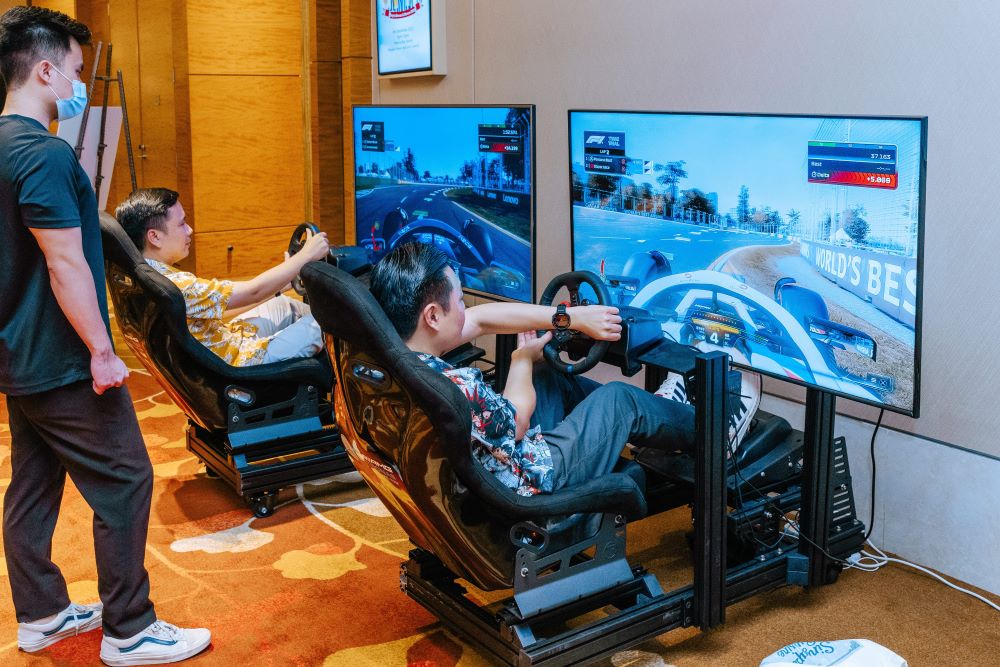A Deep Dive into Gamification
Gamification, a term derived from “game” and “ification,” represents the process of applying game-design elements and principles in non-gaming contexts. It’s a powerful strategy used to enhance engagement, motivation, and participation by leveraging the elements that make games so captivating and enjoyable. But to truly grasp the impact of gamification, it’s essential to explore its underlying principles, how it works, and its broad applications, particularly in the corporate world.
The Core Principles of Gamification
Gamification is built on several key principles that tap into fundamental human psychology. These include:
1. Rewards and Incentives
At the heart of gamification are rewards, which serve as incentives for participants to engage with the task or activity. These rewards can take many forms, including points, badges, virtual currency, or tangible prizes. The anticipation of receiving a reward can significantly increase motivation, driving participants to put in more effort and stay engaged longer.
2. Progression and Achievement
People are naturally driven to see progress and achieve goals. Gamification leverages this by incorporating elements like progress bars, levels, and achievements that visually represent a participant’s advancement. This sense of progression provides a clear path toward goals, making tasks feel more manageable and satisfying.
3. Competition and Social Interaction
Competition is another powerful motivator. By introducing elements like leaderboards or head-to-head challenges, gamification taps into the competitive nature of individuals, encouraging them to outperform others. Additionally, social interaction—whether through collaboration or competition—fosters a sense of community and belonging, making the experience more engaging.
4. Immediate Feedback
Games provide instant feedback, allowing players to quickly understand the impact of their actions. Gamification applies this principle by offering real-time feedback through notifications, score updates, or visual indicators of progress. Immediate feedback helps participants adjust their strategies and stay motivated.
5. Personalization and Autonomy
Effective gamification allows for personalization, giving participants the freedom to choose how they want to engage with the activity. This autonomy enhances the experience by allowing individuals to tailor the experience to their preferences, making it more relevant and enjoyable.
How Gamification Works
Gamification works by integrating these principles into activities or processes that are typically less engaging. It transforms routine tasks into dynamic experiences by introducing game-like elements that make the activity more appealing. The goal is to create a more immersive and motivating experience, encouraging participants to engage with the activity at a deeper level.
In the context of corporate events, gamification can be applied in various ways:
- Interactive Workshops: Transforming training sessions into interactive workshops where participants earn points for completing tasks or answering questions correctly.
- Challenges and Competitions: Organizing team-based challenges that require collaboration and problem-solving, with leaderboards to track progress and foster competition.
- Reward Systems: Implementing reward systems where participants earn badges or prizes for achieving specific milestones during the event.
- Quests and Missions: Creating a series of quests or missions that participants must complete, each offering different levels of difficulty and rewards.
The Psychology Behind Gamification
Gamification is so effective because it taps into several psychological drivers:
- Intrinsic Motivation: This is the internal drive to perform an activity for its inherent satisfaction rather than for some separable consequence. Gamification can enhance intrinsic motivation by making tasks more enjoyable and providing a sense of accomplishment.
- Extrinsic Motivation: This involves external rewards, such as points, badges, or prizes. Gamification uses these rewards to boost motivation, particularly in tasks that might not be inherently enjoyable.
- Behavioral Triggers: Gamification often employs triggers to encourage certain behaviors. For example, a daily login bonus in a gamified app might encourage users to engage regularly, forming a habit.
Broader Applications of Gamification
While corporate events are a prime area for gamification, its applications extend far beyond:
- Employee Training and Development: Gamified training programs can make learning more interactive and effective. For example, employees might complete modules in the form of quests, earning badges for mastering skills.
- Marketing and Customer Engagement: Brands use gamification to engage customers through loyalty programs, interactive ads, and gamified shopping experiences. For instance, a retail app might reward users with points for completing purchases, which can be redeemed for discounts.
- Health and Wellness Programs: Gamification is widely used in health and wellness apps to encourage behaviors like exercising regularly or maintaining a healthy diet. Users might earn points for completing daily workouts, with leaderboards fostering competition.
- Education: In education, gamification helps make learning more engaging for students. Teachers might use gamified platforms to reward students for completing assignments or participating in class.
The Future of Gamification
As technology continues to evolve, so too does the potential for gamification. The integration of augmented reality (AR), virtual reality (VR), and artificial intelligence (AI) is opening up new possibilities for creating even more immersive and personalized gamified experiences. In the corporate world, these technologies could lead to more dynamic and engaging events, where participants interact in virtual environments, complete challenges in real-time, and receive instant feedback.
Moreover, as companies increasingly recognize the value of gamification in driving engagement and achieving business objectives, its adoption is likely to grow. Whether in corporate events, employee training, or customer engagement, gamification will continue to play a critical role in shaping how organizations interact with their audiences and achieve their goals.
To head back to read another article in our blog, click here.

